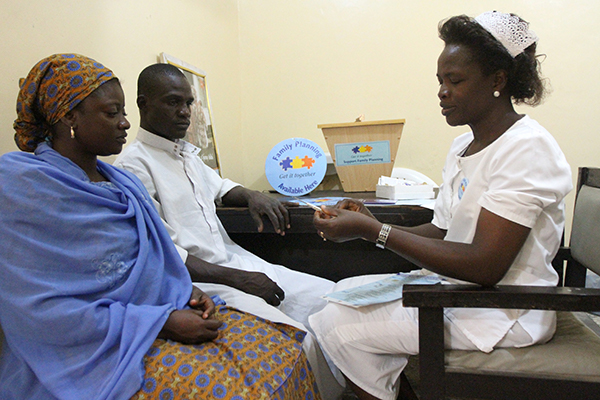Whether service communication is implemented by a service delivery partner directly or through coordination with an SBCC partner, understanding better communication practices is important for ensuring better behavioral and health outcomes. For service delivery partners collaborating with SBCC partners, understanding these principles will foster better consistency between communication and service delivery, more realistic expectations for planning and timelines, and improved coordination overall. For service delivery partners directly implementing SBCC, understanding and applying these key principles is essential for producing high-quality communication outputs and improving program quality.
The types of communication activities you design will depend on the needs that exist along the continuum of care. For example:
- For needs in the before stage, you might design demand generation and outreach, normative change, or provider trust activities.
- For needs in the during stage, you might design counseling, provider behavior change, clinic environment, or client empowerment activities.
- For needs in the after stage, you might design peer support, outreach, or follow-up activities.
All of these activities will be part of your larger service delivery efforts and linked to the same overarching behavioral and health outcomes.
Each organization will have its own design process. The SBCC field has a number of strategic approaches, frameworks, and guidelines for designing effective campaigns and activities. Some examples can be found in the Resources sidebar. Since most service delivery partners are not designing full SBCC programs, this section of the I-Kit provides specific tools and techniques to address some of the most common challenges organizations face in integrating SBCC across the continuum of care.
The table below summarizes some of the key challenges service delivery projects face, potential service communication solutions, and the skills necessary to delivery those solutions.
In Burkina Faso, the RESPOND project addressed barriers to contraceptive choice across three districts through a holistic design approach. To improve the supply of services, the project trained providers and supervisors, held special service days and helped the MOH adopt the REDI counseling curriculum and the facilitative supervision approach. To create an enabling environment, RESPOND assisted the MOH to update its FP registers and orient providers on how to complete them. In addition, the MOH used Reality Check to estimate contraceptive needs, costs, and the resulting health impact for the National Plan for Repositioning FP. To improve demand for FP, the project held community-based FP talks and theater; radio shows, spots and advertisements (linked to special FP service days); and nationally disseminated client testimonial videos. As a result, the number of public facilities that could offer implant and the IUD increased from eight to 25 and from two to 26, respectively. IUD insertions in public facilities increased nearly 14-fold, and implant insertions rose 27%. Read more.
| Challenge | Potential Service Communication Solutions | Required Service Communication Skills |
|---|---|---|
|
Getting clients to services |
|
|
|
Helping clients adopt desired behaviors and use products |
|
|
|
Helping clients maintain desired behaviors and adhere to treatment regimens |
|
|
|
Reaching the desired audience with messages |
|
|
|
Getting the audience to respond to communication efforts |
|
|
|
Achieving positive client-provider interactions |
|
|
Based on these challenges and solutions, this I-Kit will provide step-by-step guidance on four areas:


